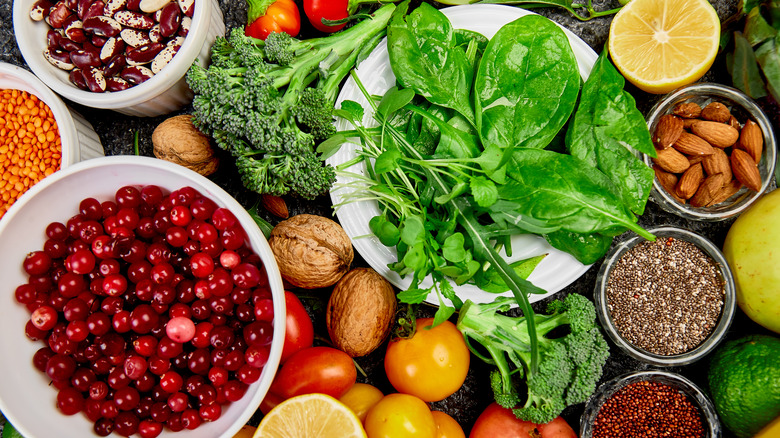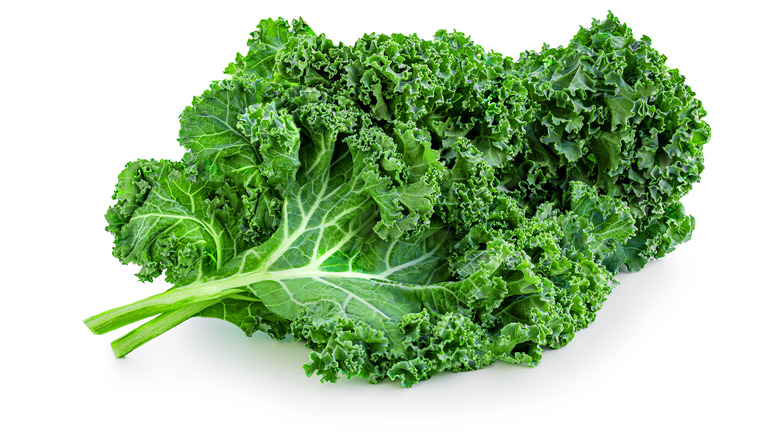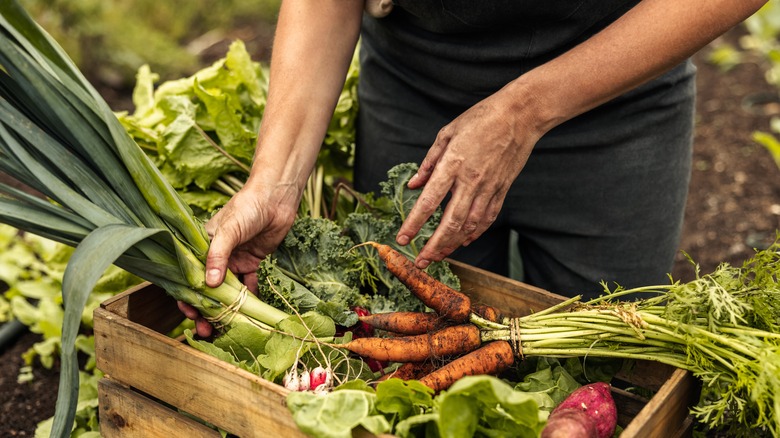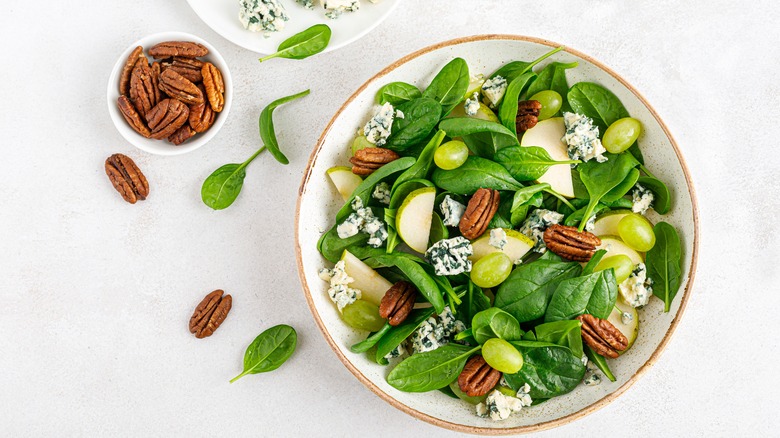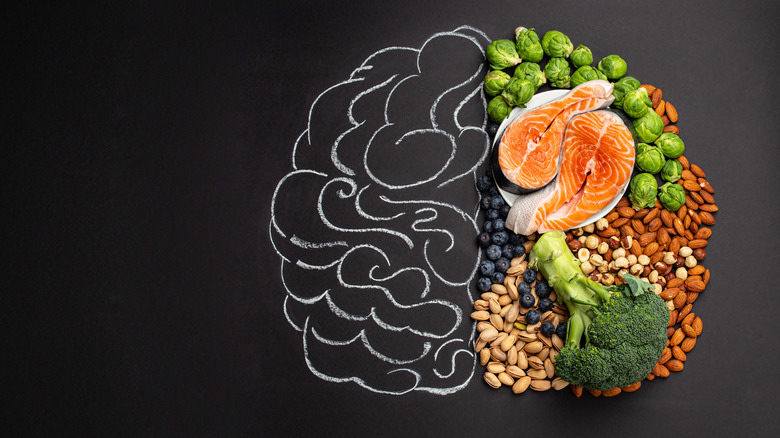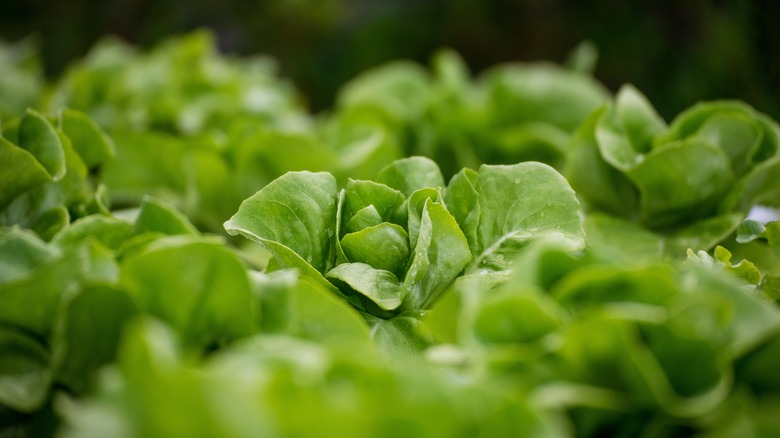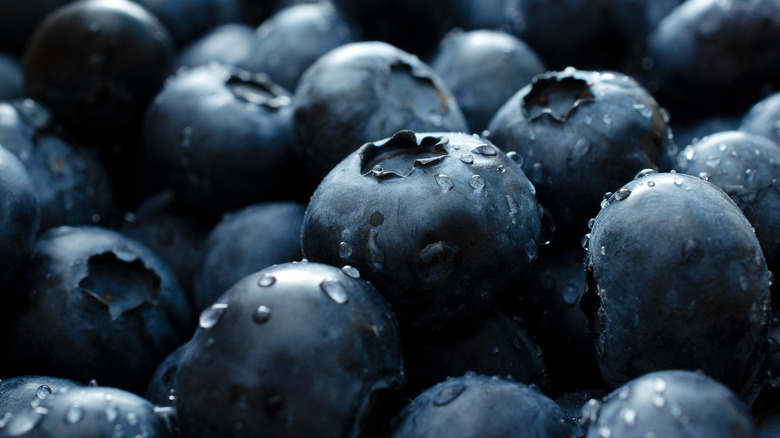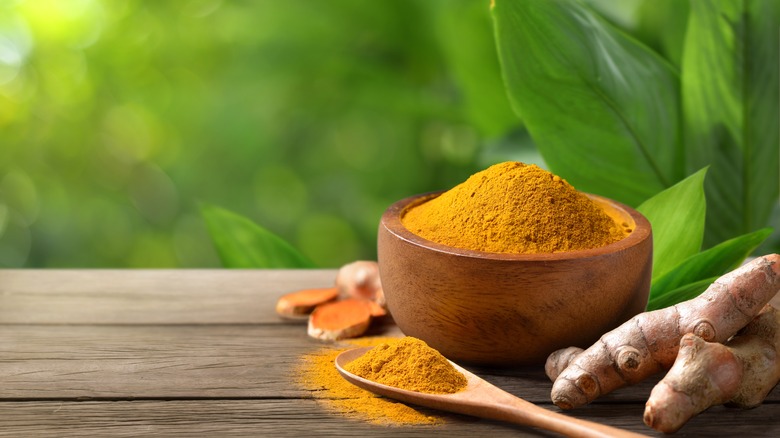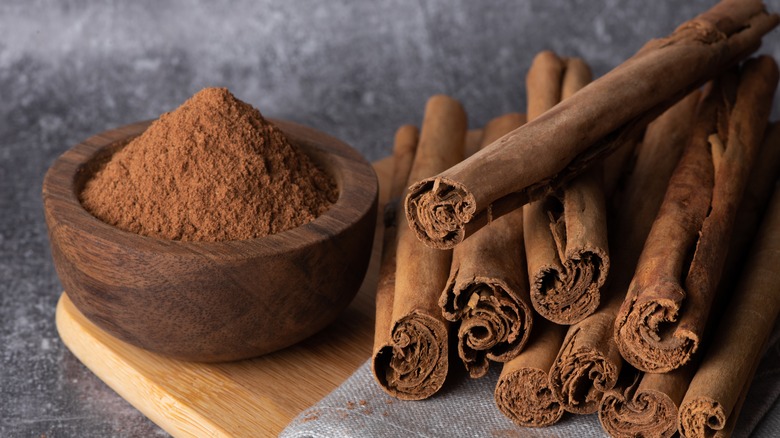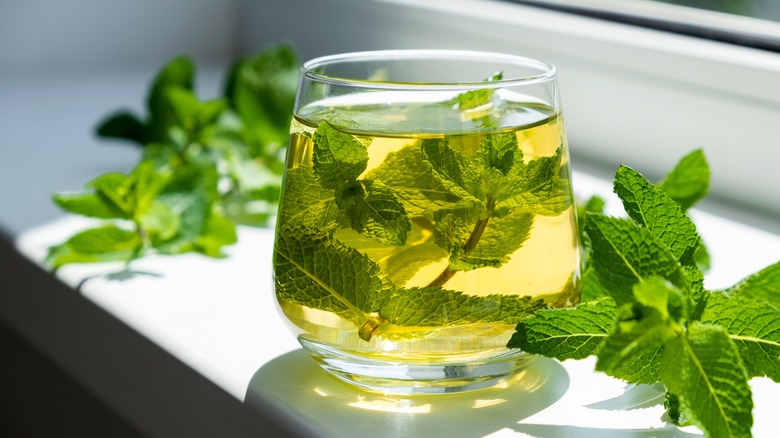The Truth About Superfoods
Kale is cool, blueberries are antioxidant powerhouses, and superfoods are all the rage in America and Europe. Every day, dozens of stories of "scientific proof" of the benefits of superfoods are published in medical journals and legitimate news media. They all tout the benefits of eating or drinking superfoods. Depending on the source or the science, there are as many as 100 superfoods that "experts" say you should be eating on a regular basis.
Leading health experts, nutritionists, dietitians, and doctors, especially celebrity doctors like Dr. Oz, claim superfoods are rich in nutrients and can reduce your risk of heart disease, ease arthritis pain and inflammation, help control diabetes, and protect against cancer and other serious chronic diseases. How much of the information is fact and how much is just more food trend fodder? We did a bit of superfood sleuthing to help separate the science of superfoods from the spin. You might be surprised how some of the superstars like kale and blueberries stack up.
So what are superfoods?
It depends. Despite the media and scientific cacophony, there isn't any consensus on what makes a superfood super.
Look up the term "superfoods" in a medical dictionary and you'll find something like this: "A non-medical term popularized in the media to refer to foods that can have health-promoting properties such as reducing one's risk of disease or improving any aspect of physical or emotional health. So-called superfoods may have an unusually high content of antioxidants, vitamins, or other nutrients."
The Oxford Dictionary definition states a superfood is "a nutrient-rich food considered to be especially beneficial for health and well-being." According to Live Science, a superfood is, "Mostly plant-based but also some fish and dairy — thought to be nutritionally dense and thus good for one's health." Eating Well says superfoods are, "multi-taskers — foods brimming with various disease-fighting nutrients, usually without providing too many calories."
Hyper healthy or just hype?
Health food fads are in one minute and out the next, often without any consensus about real health benefits or practical uses. The same goes for superfoods. There is no consensus on what superfoods are, how they impact overall health, or how much you should eat regularly to receive the most benefits. It seems no one can agree on criteria to classify, define, or determine if a portion of food is super. As Health.com puts it, "Though there is no legal or medical definition, superfoods are nutrient powerhouses that pack large doses of antioxidants, polyphenols, vitamins, and minerals."
Not all doctors and scientists agree which foods are nutrient-rich or if consuming superfoods helps you safely improve your health, prevent disease, and lose weight. Researchers at the European Food Information Council say there are no proven benefits to superfoods and that marketing is misleading. Other scientific groups completely discount the concept, like Cancer Research UK, which says "the term 'superfood' is really just a marketing tool, with little scientific basis."
Superfood lingo
If you read all the hype out there, you'll find superfood advocates are adamant that their list is the ultimate list, tossing around terms like "antioxidants" and other quasi-scientific sounding words to convince you. But let's go back to the beginnings of the superfood movement.
In the 1990s, scientists discovered a link between free radicals and how their oxidation damaged our body's cells and contributed to heart disease, cancer, and other chronic illnesses. That's when antioxidants, which destroy free radicals, became the superhero of illness prevention. Suddenly, everyone was looking at vegetables, fruit, wine, tea, coffee, chocolate, and olive oil in a new light. The trick was getting just the right amount of antioxidants to make a difference.
Where do we find superfoods?
You can easily find antioxidants in vitamin E, vitamin C, beta-carotene, flavonoids, and resveratrol. Most of the time, adding superfoods to your diet is as easy as picking fruits and vegetables from the garden in a range of colors, eating chocolate high in cacao, and drinking a little red wine.
Some scientists believe the real secret is knowing which foods contain the most nutrients. Nutrient density is at the core of the superfood movement's claims, but ham-fisted marketing, shill doctors, fake products, and hype in the media dilute a lot of the real medical and scientific evidence to support superfood claims. Doctors and nutritionists can't agree on the nutrients most important for optimal health, whether these nutrients should be found through diet or supplements, and the recommended daily amounts of different nutrients.
Taking a scientific approach
Frustrated with the lack of any scientific consensus on selection criteria for superfoods, or really any ranking, one scientist, Jennifer Di Noia, Ph.D., of William Patterson University in New Jersey and the Centers for Disease Control and Prevention, was prompted to study what makes food super.
Dr. Di Noia set out to identify what she called "powerhouse fruits and vegetables." These were plant-based foods associated with reducing chronic illness or the risk of cancer and cardiovascular disease based on their nutrient density.
For her study, she identified 47 foods and scored them for nutrient density based on their ability to provide, on average, 10 percent or more daily value per 100 calories of "17 nutrients of public health importance" according to the Food and Agriculture Organization of the United Nations and Institute of Medicine.
The nutrients included potassium, fiber, protein, calcium, iron, thiamin, riboflavin, niacin, folate, zinc, and vitamins A, B-6, B-12, C, D, E, and K.
Which superfoods made the grade?
Di Noia published her report, Defining Powerhouse Fruits and Vegetables: A Nutrient Density Approach, in June 2014. What makes this report so cutting-edge isn't just the 47 fruits and vegetables she defined as "powerhouse fruits and vegetables," but her ranking of these foods based on their nutrient densities.
Dr. Di Noia based her nutrient density score on the CDC's percentage of daily value for each nutrient, but she balanced her experiment so foods exceptionally high in one nutrient but lacking in many others wouldn't be classified as nutrient-dense. Her study examined greens and leafy vegetables, yellow and orange veggies, citrus, cruciferous vegetables, and some items from the superfoods hit lists including berries and members of the allium family like garlic and onions.
Fascinating results emerged from Di Noia's research. Frequently acclaimed superfoods purported to reduce risks for cardiovascular diseases, neurodegenerative diseases, and cancers ranked low. Six of the 47 foods studied (raspberry, tangerine, cranberry, garlic, onion, and blueberry) had such low nutrient densities they couldn't be ranked. Also, kale's position at No. 15 — below other leafy greens like Chinese cabbage, chard, and collard greens — came as quite a shock.
The vegetable that ranked No. 1 based on achieving 100 percent of the nutrient density standard was watercress. That's right; a forgotten cruciferous vegetable packed with nutrients made the grade.
'Powerhouse' fruits and vegetables
If you want a real shot in the arm for good health, eat powerhouse foods in combination with other healthy foods that satisfy the recommendations of the USDA's newly revised dietary guidelines. Gone is the old food pyramid. Now we have the 2015-2020 Dietary Guidelines for Americans.
These new guidelines are based on scientific research intended to help Americans develop healthy eating patterns that provide many of the nutrients missing from our diet. This new approach is designed to prevent chronic diseases like "obesity, heart disease, high blood pressure, and Type 2 diabetes" and help Americans create a diet plan that is compatible with their lifestyle, culture, religious restrictions, and budgets. According to the guidelines, Americans need to eat more fruits, vegetables, whole grains, and low-fat dairy products, make healthy food choices by reducing saturated fat, sugar, and salt intake, and follow federal guidelines for physical activity.
Without variety, our diets would be a real snooze fest. One way to liven things up is to combine powerhouse foods with other nutrient-rich foods proven to prevent disease. These foods include organic, local, unprocessed whole foods free of growth hormones and steroids, and they are winners in any diet, no matter what cuisine you cook. To get you started, see how the different fruits and vegetables ranked in Dr. Di Noia's study.
Extra virgin olive oil
For thousands of years, olive oil has been a part of a healthy diet that successfully sustained our ancestors. It just took modern science to prove what the ancients knew all along: that cold-pressed, unrefined extra virgin olive oil is unlike other plant-based cooking oils, including other grades of olive oil. This magic elixir is a rich natural source of monounsaturated fat, omega-9 fatty acid, and high concentrations of phytonutrients essential to good health. Without any understanding of nutrition, our ancestors instinctively and naturally ate healthier than we do now. While obviously not the only factor, a diet rich with extra virgin olive oil (what is now commonly regarded as the Mediterranean diet) that was also low in saturated fats and was also moderately rich in carbohydrates and soluble fiber from fruit, vegetables, pulses, and grains kept people healthy.
In today's stressful, fast-paced world, if you want a lot of bang for your nutrient dollars, extra virgin olive oil is a good place to start. As a monounsaturated fat, it's high in calories, but it has been shown to help reduce levels of obesity, reduce the risk of heart disease, lower cholesterol, and help control insulin levels.
When you buy extra virgin olive oil, be sure to buy only the best from a supplier that guarantees the quality of its oil. One source is The Fresh Pressed Olive Oil Club. It's run by T.J. Robinson, a renowned olive oil expert who sources directly from olive growers.
Turmeric
The ancients knew the spice cabinet was more than just a repository for cooking herbs and aromatics. While Indian cooks know that turmeric gives curry its distinctly tangy flavor, it's the curcumin compound that gives turmeric its deep golden color and made it a valued medicine by traditional healers. Scientific evidence is starting to mount that this member of the ginger family might have a place as a superfood.
Curcumin has anti-inflammatory properties, is an antioxidant, delayed Type 2 diabetes in one study, and may assist with brain function and arthritis symptoms.
Early studies suggest curcumin could help fight or prevent cancer, but there hasn't been enough research done on human subjects yet to be sure.
Cinnamon
The next time you make a batch of gingerbread cookies, heat mulled wine, or make an aromatic cup of tea, you can benefit from some of cinnamon's natural medicines. Long ago, ancient Egyptians used it during embalming, and in traditional Chinese medicine it has historically been used to help treat heart disease, though modern science has yet to conclusively prove cinnamon's effectiveness in this role.
There are hundreds of species of evergreen cinnamon trees, but the two that produce the cinnamon we know and love are Ceylon cinnamon (also known as "true cinnamon") and cassia, a close relative. Ceylon cinnamon is native to Sri Lanka, while cassia originates in China and Indonesia. Both tropical trees offer potential health benefits worth exploring.
They yield their precious, aromatic treasures when the inner bark is removed, dried in the sun, and rolled into quills, or sticks. This process makes it possible to use whole cinnamon sticks to flavor drinks or cinnamon powder to add a piquant flavor to sweet and savory foods. But cinnamon might be more than just an aromatic tree bark. Some studies suggest it is high in antioxidants, can be an anti-inflammatory, and can help the body combat diabetes in some ways.
Green tea or wine, pick your pleasure
In the drinks department, two natural products, green tea and wine, stand out for their curative powers and contributions to good health, longevity, and anti-aging qualities. Green tea is a wholesome ancient Asian drink with ages-old health secrets and potential natural remedies for everything from cancer to heart disease. Studies at leading health institutes so far point to the powerful antioxidants in green tea. The main superhero here is EGCG, a polyphenol that slows irregular cell growth, which can potentially improve immune function. One study from the American Association for Cancer Research showed that it may play a role in slowing the growth and inflammation of prostate cancer.
If you want something with a bit of kick, red wine, made with the dark skins and seeds of grapes, is rich in polyphenols and resveratrol. Both the skins and the seeds contain high levels of antioxidants that have can reduce the risk of blood clots and that have been shown to improve heart function in rats. Some studies have shown that the resveratrol found in red wine might help prevent several types of cancer, including bowel cancer. One glass of red wine a day should do it (after you've consulted your physician first, of course). Any more than one glass and you're undoing any positive effects from the wine. If you're a teetotaler, consider opting for grapes instead.
Chocolate
The next time you feel a little blue or under the weather, grab a bittersweet chocolate bar. It will put a smile on your face, but not just because it tastes good. Real chocolate, the kind made with cacao, contains hundreds of compounds like polyphenols that can improve your mood. This is not the time to cut corners, so avoid milk chocolate or chocolate that contains less than 70 percent cacao; they just won't do the job. The dark stuff is what you want because it's naturally lower in sugar and might be able to prevent diabetes. If you're not sure what percentage of cacao is in the chocolate, get bars that are labeled "pure," "dark," or "unprocessed."
